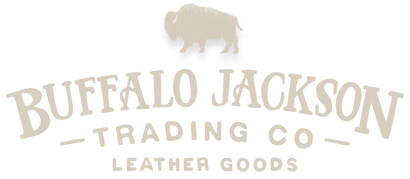Your Cart is Empty
You are $99.00 away from free shipping!
Your Cart is Empty
You are $99.00 away from free shipping!

The history of leather reaches back to ancient civilizations, and while much of the process hasn’t changed over the past several thousand years, you will likely be grateful for a few parts that have changed. (This is a good time to caution the weak stomachs: do yourself a favor, and skip paragraph #3.)
In its most basic form, leather is simply animal skin. Finding useful applications for animal hides is one of man’s earliest and most useful discoveries, and while early cave pictographs (REALLY early; as in 20,000 BC) show leather being used for clothing, the first reference to tanned leather (as opposed to rawhide), isn’t found until much later.
The earliest references to tanning (preserving the animal hides) appear around 8,000 BC -- and their methods aren’t for the faint of heart. These pioneers of leather tanning scraped the hair from the hide and then treated it with urine or brains to preserve and soften the material. This process remained the same for several thousand years, although different civilizations used different substances, including brains, urine, dung, alkaline lime, fat, and salt.
History credits ancient Greeks with developing a revolutionary tanning formula using water-soaked leaves and certain tree barks to preserve leather. This process, called vegetable tanning, uses the tannins (thus, the term “tanning”) that occur naturally in the leaves and bark. The tannins bind to the collagen proteins in the animal hide, coat them, and cause them to become less water-soluble, which makes them resistant to bacteria and prevents the hide from putrefying. Vegetable tanned leather became a well-established trade in Greece around 500 BC, and the Romans made wide use of leather for clothes, sandals, and military equipment such as saddles, harnesses, and shields.
Decorations and embellishments entered the picture during the Middle Ages when artisans began tooling the material by pounding a stamp into the leather, creating a pattern. The Moors of Spain took the craft to another level with their intricately tooled leather saddles, which made their way to the New World in the mid-1500s by way of the Conquistadors. With the arrival of vegetable tanning in the colonies, leather flourished as a vital part of everyday life both there and in Europe.
The Industrial Revolution changed how people made goods -- and how people consumed goods -- dramatically. With the introduction of machinery, leather could be made more quickly and at a lower cost. Although the quality was lower than before, consumers bought more, and producers made more. Industrialization also created a demand for new kinds of leather (like belting to drive machines), and even fashion got in the game with a demand for softer, lighter-weight footwear. Overall, a general rise in the standard of living led to a demand for colorful, ultra soft and supple leather -- and while vegetable tanned leather was (and still is) beautiful, smooth, and durable, it remained too thick and stiff to meet the new requirements.
The combination of new demands and new technology led to the development of chromium tanning (or “mineral tanning”), which irreversibly changed the craft of tanning leather. Mineral tanning uses chromium sulfate, is faster than vegetable tanning, and produces a more flexible, stretchable leather, much better suited for mass production. But, unlike vegetable tanned leather, chromium tanned leather is not as well-suited for tooling, branding, painting, or carving. Even so, after the Industrial Revolution and the introduction of chromium tanning, the practice of vegetable tanning nearly died out.
Although leather was in short supply during the war, afterward, leatherworking was incorporated as a therapeutic program in military rehab centers, rec centers, and hospitals. These programs began a small resurgence of pre-Industrial Revolution leathercraft, and also of vegetable tanned leather, which is much better suited for handcrafted leatherwork. With minimal training or tools, veterans were able to use their hands to create useful and beautiful leather items like wallets and belts.
During his time in the service, Charles Tandy - a Texas entrepreneur and the son of a struggling leather artisan - saw the leatherworking therapy programs and decided leathercraft kits should be put in the hands of civilian home hobbyists as well. Tandy dreamed that getting leather hobby kits and tools into consumers’ hands would help revive not only his father’s failing leather business but leathercraft in general. Soon, he began offering leather kits for home hobbyists. His catalog of inexpensive kits grew and quickly evolved into Tandy Leather, which remains a trusted and familiar name in the leathercraft world today.
While the history of leather extends back thousands of years, incredibly (but not surprisingly), leather continues to be the material of choice for endless applications around the world. Today, most mass-manufactured leather products are chromium tanned and produced in India or China. Vegetable tanning, however, remains the process of choice for smaller scale producers of handcrafted leather goods. Despite the industrial changes introduced along the way, the hard work of skilled artisans, in the tradition of centuries past, remains.
Orders shipped to Canada may be subject to import duties, tariffs, and taxes charged by Canadian customs. These fees are not included in our prices or shipping costs. You will be responsible for any additional charges upon delivery. Please review local customs regulations before placing your order.

